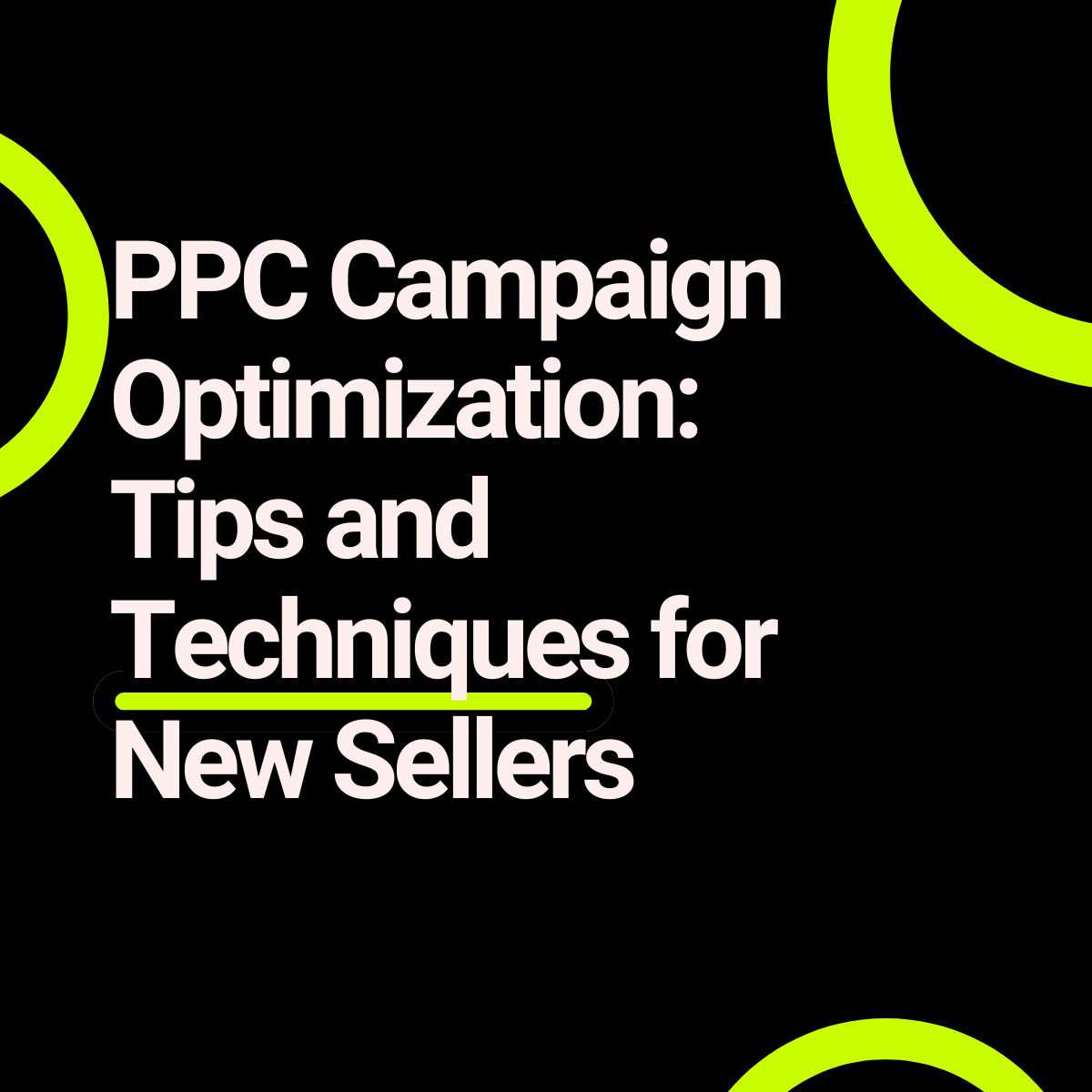Pay-Per-Click (PPC) campaigns serve as a powerful tool for new sellers aiming to boost their visibility and drive targeted traffic to their products or services. However, running a successful PPC campaign requires more than just setting up ads and bidding on keywords. To maximize the effectiveness of your PPC efforts and achieve optimal results, it’s essential to employ strategic optimization techniques for PPC campaigns.
I. Understanding PPC Campaign Optimization
Before delving into specific optimization strategies, it’s crucial to grasp the fundamentals of PPC campaign optimization and its significance in achieving advertising goals. Optimization involves fine-tuning various elements of your PPC campaigns to improve performance and efficiency. By optimizing your campaigns, you can:
- Increase Click-Through Rate (CTR): Encourage more users to click on your ads, leading to increased website traffic.
- Improve Conversion Rate: Enhance the likelihood of converting clicks into desired actions, such as purchases or sign-ups.
- Reduce Cost Per Acquisition (CPA): Lower the overall cost of acquiring customers or leads, maximizing your advertising budget’s effectiveness.
- Enhance Ad Relevance: Ensure that your ads align closely with user intent, resulting in higher quality traffic and improved ad positioning.
II. Key Components of PPC Campaign Optimization
Successful PPC campaign optimization requires a systematic approach that addresses various components of the campaign. Using the MECE framework, let’s explore the essential elements of optimization:
A. Keyword Research and Selection
1. Conducting Thorough Keyword Research
- Utilize keyword research tools like Google Keyword Planner, SEMrush, or Ahrefs to identify relevant keywords and search terms related to your products or services.
- Focus on long-tail keywords with lower competition and higher relevance to your target audience’s search queries.
2. Refining Keyword Selection
- Prioritize keywords with high search volume, low competition, and strong commercial intent.
- Consider incorporating negative keywords to exclude irrelevant search queries and improve ad targeting.
B. Ad Copy Optimization
1. Crafting Compelling Ad Copy
- Write concise and persuasive ad copy that highlights unique selling points and encourages clicks.
- Incorporate relevant keywords naturally into ad headlines, descriptions, and display URLs for improved relevance and visibility.
2. A/B Testing Ad Variations
- Test different ad variations, including headlines, descriptions, and calls-to-action, to identify the most effective messaging.
- Monitor performance metrics such as CTR and conversion rate to determine the winning ad variations.
C. Landing Page Optimization
1. Designing User-Friendly Landing Pages
- Ensure that landing pages are visually appealing, easy to navigate, and optimized for mobile devices.
- Maintain consistency between ad messaging and landing page content to provide a seamless user experience.
2. Implementing Clear Call-to-Action (CTA)
- Include prominent and compelling CTAs that prompt visitors to take desired actions, such as making a purchase or submitting a contact form.
- Test different CTA placements, colors, and wording to maximize effectiveness.
D. Bid Management and Budget Optimization
1. Setting Bid Strategies
- Choose bid strategies that align with your campaign objectives, whether it’s maximizing clicks, conversions, or target ROAS (Return on Ad Spend).
- Adjust bids based on performance data and market conditions to maintain competitiveness and achieve desired ad positions.
2. Budget Allocation
- Allocate budget strategically across campaigns and ad groups based on performance metrics and priorities.
- Monitor spending and adjust budget allocations to focus on top-performing campaigns and capitalize on high-converting opportunities.
E. Performance Monitoring and Analysis
1. Tracking Key Performance Metrics
- Regularly monitor key metrics such as CTR, conversion rate, CPA, and ROAS to evaluate campaign performance.
- Identify trends and patterns to uncover areas for improvement and optimization.
2. Implementing Data-Driven Insights
- Use performance data to make informed decisions and adjustments to campaign settings, targeting, and messaging.
- Leverage advanced analytics features and attribution models to gain deeper insights into the customer journey and campaign effectiveness.
III. Advanced Techniques for PPC Campaign Optimization
In addition to the fundamental optimization strategies outlined above, new sellers can implement advanced techniques to further enhance their PPC campaigns’ effectiveness:
A. Remarketing Campaigns
- Target previous website visitors or engaged users with tailored ads to encourage repeat visits and conversions.
- Segment audiences based on their behavior and engagement level to deliver personalized messaging and offers.
B. Ad Extensions
- Utilize ad extensions such as sitelinks, callouts, and structured snippets to provide additional information and enhance ad visibility.
- Experiment with different ad extensions to improve ad relevance and drive higher CTR.
C. Ad Scheduling and Geo-Targeting
- Optimize ad delivery by scheduling ads to appear during peak hours or times when your target audience is most active.
- Implement geo-targeting to display ads to users in specific locations, ensuring relevance and maximizing ad spend efficiency.
D. Ad Quality and Relevance
- Maintain high ad quality and relevance by regularly updating ad copy, landing pages, and targeting criteria.
- Monitor ad performance and optimize targeting parameters to ensure that ads are displayed to the most relevant audience segments.
IV. Conclusion
PPC campaign optimization is a continuous process that requires ongoing monitoring, analysis, and refinement to achieve desired outcomes. By implementing the tips and techniques outlined in this guide, new sellers can maximize the effectiveness of their PPC campaigns, drive targeted traffic to their offerings, and ultimately, achieve their advertising objectives. With a strategic approach to optimization and a commitment to data-driven decision-making, new sellers can position themselves for success in the competitive landscape of online advertising.

